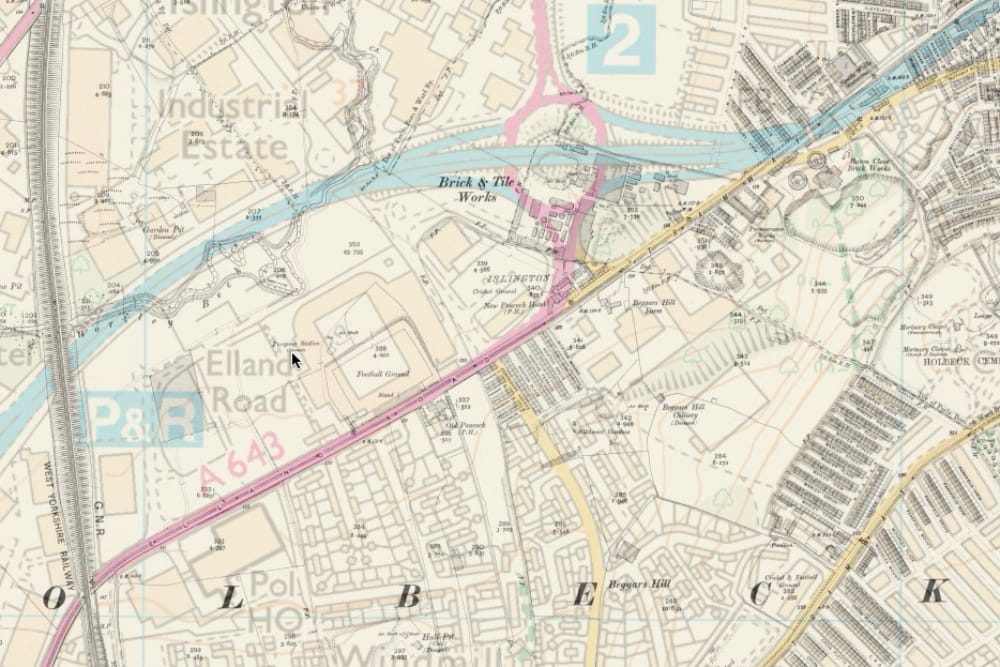A tale of two Peacocks, part one: why a peacock, why Islington and why Elland Road?
The Peacocks are called The Peacocks because there's a Peacock pub on Elland Road. But why was there a pub called The Peacock on Elland Road — let alone two? Let's investigate.
Maps are meant to explain your surroundings, but a historical map of the area around Elland Road stadium in Leeds can be a disorientating document.
Some of the confusion is easily drawn over. The M621 motorway completely altered the landscape. Before that, there was a time when Lowfields Road wasn't there to connect Elland Road to the south and Gelderd Road to the north. The football ground itself has moved around within its own patch of land, so some plans show the pitch further south before the Scratching Shed stand was replaced. Go back far enough and the pitch is orientated east-west, but again, it's easily explained: it was rotated north-south to improve drainage and create more space for terraces.
When you've gone back that far, though, around 1900, you're looking at other more difficult problems. Old maps say this place where Elland Road was built is 'Islington', like Islington in London. But why that name? Nobody seems sure. The 'Peacock' name is another mystery upon mysteries. A coal mine is opened, then closed: 'The Peacock Pit'. The football ground gets called 'The Old Peacock Ground', and again, what's with the bird? Weirdest of all is the pub on the other side of the road, that apparently owned the land the stadium was built on and lent its name: The Old Peacock.

Nowadays The Old Peacock is a brick-built building of 1963. That was when it became newer than The New Peacock, a 19th century pub further along Elland Road, towards Leeds, that stood until it was swept away so the roundabout for the M621 could be built. But we know that, originally, there was only one pub on this part of Elland Road, The Peacock Inn, so the New Peacock must have been an imitator: it seems to have started serving in the 1840s, fifteen years after the first known records of The Peacock. A Peacock, then a New Peacock, then an Old Peacock, newer than the New Peacock.
What's going on?
The answers to all these questions share one source, I think: roads. Turnpike roads, more accurately. Turnpikes were a 17th century innovation answering the growing need for reliable transport over long distances, and municipal authorities such as parishes not having the funds or the willing to pay for new roads. Parliament authorised Turnpike Trusts to build and maintain advantageous roads that would be paid for by tolls paid by their users. They acted as financial instruments, too, as many Trusts auctioned off the right to take the tolls each year, allowing local investors to profit. Landowners did well too, if they could turn their plots into suitable building sites along the new routes.
To keep reading, please become a More to Read member
Leedsista is supported by Leeds fans who think decent writing about their football team is worth £3 a month.